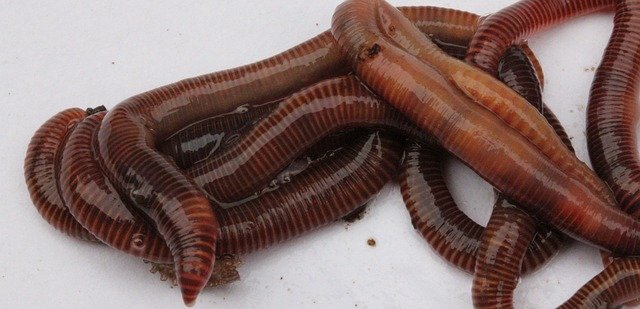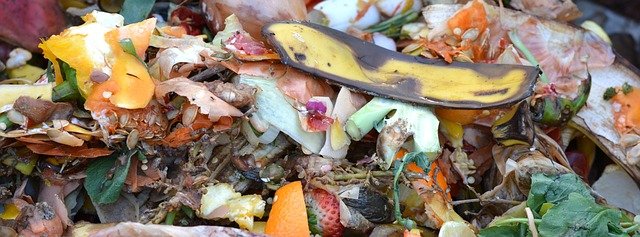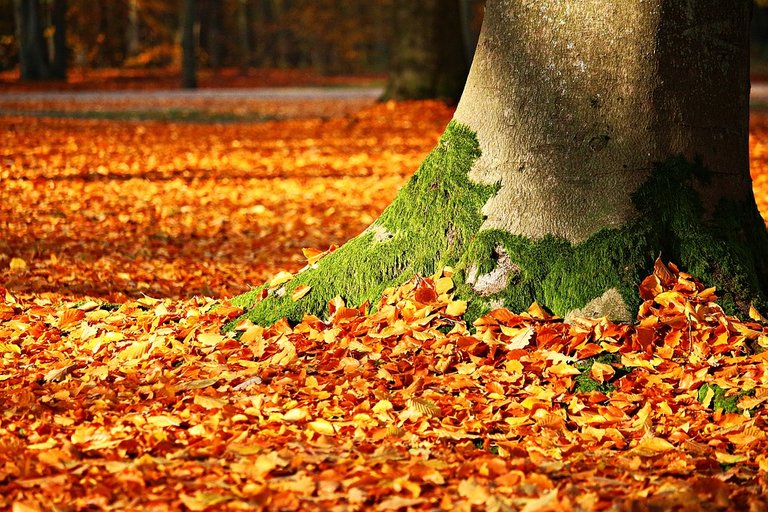Composting with worms will require utilization of several key process for optimum success. To start a worm bin there must be right kind of worms used to compost. The worms will require food as well as bedding for them to live and thrive in. Anything that rots is food for the worms and as for bedding, moisture is the key ingredient. Finally the bin needs to be stored in the proper conditions to ensure safe and happy worms.
Red wigglers unlike night crawlers, prefer staying near and on the surface to feast on organic matter, while night crawlers will burrow deep in the ground during their natural life cycle. This is why red worms are the worm of choice for composting. There are various websites where worms can be ordered online, but local bait shop or worm farm nearby might be a better alternative.
The worms will need more than just kitchen scraps to survive as they lack teeth and digestive enzymes of their own. To digest their food the worms will need not only the microorganisms of rotting soft organic matter, but grit sand and soil as well, which lodges in their gizzard. Utilizing the natural biosphere of fungi and bacteria that lives in the earth these worms will digest any organic matter.
Worms enjoy eating vegetable and fruit scraps, while being sure to avoid citrus peals, acidic fruits, animal product, and oils. Some foods they enjoy is corn meal, coffee grounds, crushed egg shells, used tea leaves, oatmeal and aged animal manure. Pasta and breads that are overly starchy can be used in moderation. The worms will also eats their bedding but it is important to supplement their diet with food wastes. As the colony grows in size, they will require a larger food supply.
Bedding as well as food is required for the worms. The bedding needs to hold moisture and preferably be something that the worms can eat as well. Some examples include peat moss, shredded newspaper, ripped up card board, aged compost, yard waste, fall leaves, wood chips or shavings, straw and hay, coconut coir, composted or aged manure, paper towels or napkins that do not have cleaning chemicals or grease. It is best to utilize a large variety of materials for their diet and bedding and to keep it moist. Creating layers of different materials, and covering the top of the materials with cardboard or moist newspaper will help to maintain moisture.
If their environment and food supply is in proper conditions, the worms population should double within 90 days. The worms are hermaphroditic but it requires two worms to reproduce. They will create cocoons that have many eggs and each egg that produce several baby worms. The worms will automatically self-regulate their population as their numbers increase. This will mean you can split the colony to either seed new bins, or populate your garden with worms.
It is important to store the worm bin in a warm and safe environment. If it is not sealed tightly, scavengers and rodents will be attracted to the food waste inside the bin. The worms require an environment that is above 40 degrees Fahrenheit but below 85 degrees. The bin could be buried in the ground to ensure proper conditions, on a shaded porch, or inside a shed or garage. The bin could even be stored in the kitchen cabinet as if maintained properly it should not create any odors.
Following these steps, a happy and healthy worm farm at any scale can be maintained to produce valuable casting and worm tea. The garden loves these additions to its soil as well as most any houseplant. With the right ingredients, dedication, and love, a worm farm is a great project for any family to learn about nature and the food cycle. Helping to save the landfill from overfilling, practicing vermiculture, everyone could help reduce and recycle their waste; making small changes in a permaculture journey. Growing together, building bonds, making improvements one step at a time with nature as a guide, all for a better tomorrow.



Peace, Abundance, and Liberty Network (PALnet) Discord Channel. It's a completely public and open space to all members of the Steemit community who voluntarily choose to be there.Congratulations! This post has been upvoted from the communal account, @minnowsupport, by permaculturedude from the Minnow Support Project. It's a witness project run by aggroed, ausbitbank, teamsteem, someguy123, neoxian, followbtcnews, and netuoso. The goal is to help Steemit grow by supporting Minnows. Please find us at the
If you would like to delegate to the Minnow Support Project you can do so by clicking on the following links: 50SP, 100SP, 250SP, 500SP, 1000SP, 5000SP.
Be sure to leave at least 50SP undelegated on your account.
Congratulationsdaily compilation 279!, your post was discovered and featured by @OCD in its
Gems! We strive for transparency.You can follow @ocd – learn more about the project and see other
website for the whitelist, queue and delegation info. Join our Discord channel for more information.As a whitelisted author, you may use @ocdb - a non-profit bidbot for whitelisted Steemians. Check our
SteemConnect or on Steemit Witnesses to help support other undervalued authors!@ocd now has a witness. You can vote for @ocd-witness with
How big of a colony can be supported in a bucket system like you made before?
Is it a good idea to age your food scraps before feeding them to your worms?
Is there such thing as too many worm bins? Could you seed a new bin, then introduce the mature bin to your garden? Is that something that people do? Seems like it would be a good practice for a constant increasing of soil life.
Posted using Partiko Android
I have only seeded my bucket with 40 adult worms so I can not speak from personal experience yet as I am still growing my farm. I imagine that the bucket can support upwards of 2000 worms, but I think that would be a bit much. The worms will create homeostasis once their populations reach peak levels for their environment, so no worries about over population if you start off slowly.
The worms would appreciate aged food scraps, but it is not really necessary as the food will age in the bin even faster in that moist environment. What makes the worms happiest is if you cut up or shred their food first. The more surface area, the faster food decomposes and the faster the worms can eat it.
If you can supply them with bedding, food, and maintain their environment by harvesting the castings, then there is no such thing as too many worm bins. When it is time to harvest the worm castings is the best time to separate the worms since you will be redoing the whole bin at that time anyways.
Not all gardens are suitable for red worms since they really need decomposing organic matter to eat, on and near the surface of the soil, but if it is a healthy and happy garden then there is probably a good layer of compost and mulch; then they should be fine to be moved into the garden. There are also several really cool designs to build worm towers that are half buried inside the garden. Giving the worms a place to live and eat food scraps, while still letting them go out into the garden to do their thing. I am planning on building one myself once my worms reproduce more since I really like the idea.
I hope that helps with your vermiculture adventure.
That does help! I'll look into the worm tower. I bet it'd be welcome in a food forest like we're working on :)
Thanks so much for these worm posts. While we're working on gathering leaves to compost into leaf mold, a worm operation would be awesome to make our composting operation more rounded out.
Posted using Partiko Android
Awesome post, resteeming! Also, welcome to steemit! :D looking forward to reading more, as my hubby and I are currently planning our Homestead venture.
Loved reading worms 101!
Xx ToL
Thank you very much for the support. It means a lot to me that you like reading my posts. I wish you well with your homesteading plans. It's nice to find so many people that have the same ideals and goals on steemit.
Have a great rest of your weekend!
aw i really wanted to do this for my balcony grow but theres one thing holding me back. we rent our apartment out for at least 2 months of the year. i cant be sure the worms will be properly looked after, im a bit worried about them getting starved, i can expect paying guest on holiday to take care feeding them. its good that u say u can keep them in a kitchen cupboard cos thats where i would of put them, as the other places would of meant direct sunlight, which i think its not so good for the wormary! thanks for all the information about there life cycle!
Thank you, I am glad you liked my post. Yes, worms are not too fond of bright light. I am sorry to hear that it would be difficult to care for the worms while on holiday. It depends on the state of the bin and how large the colony is. A smaller colony in a fresh bin with a lot of extra bedding could possibly last two month without care as they can eat their bedding once the food scrap supply runs out. The main concern would be moisture. If the bin dries out, the worms are toast. In a dark space with little air flow and some extra water to tide them over, they might be able to hold out for a long while, but it would be risky. The extra bedding would be key for them to hold moisture and have food to last a while. If you do decide to try it out, I hope you have good luck.
It would be in the kitchen under the sink is the only place. I would hate to kill them by neglect but I will consider the info thanks! I don't think I need a large colony!
Worm farms are an absute must in a permaculture or any kind of garden. Great article
Posted using Partiko Android
Thank you! Worms are the greatest.